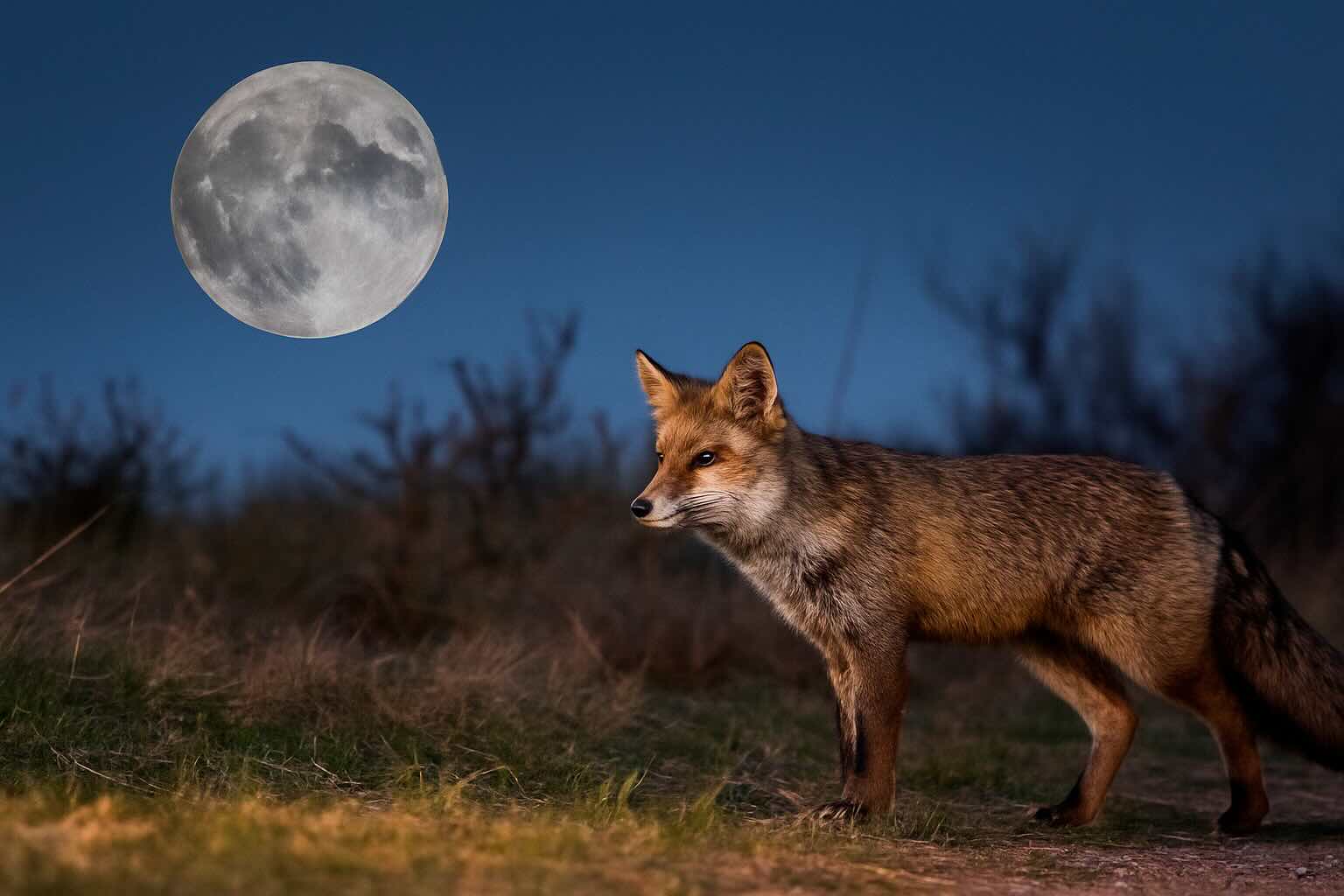For centuries, people have linked the moon not only to human myths but also to the behavior of animals. From wolves howling under the full moon to sea turtles laying eggs on moonlit beaches, lunar cycles appear to influence creatures across the globe. But what does science actually reveal about the moon’s impact on wildlife?
The Moon as Nature’s Clock
Animals rely on many natural cues to guide their survival — light, temperature, tides, and seasons. The moon is one of the most powerful signals. Its predictable phases and brightness provide a kind of natural calendar that wildlife can follow. For nocturnal animals, a full moon can change the landscape dramatically, flooding the night with light and altering how predators and prey interact.
Marine life, in particular, depends on lunar cycles. The gravitational pull of the moon drives tides, which dictate feeding times, reproduction, and migration for countless ocean species. For land animals, moonlight can alter hunting patterns, hiding strategies, and even social behaviors.
Wolves and the Myth of the Full Moon
The image of wolves howling at a full moon is one of the most enduring symbols of the lunar cycle. While wolves do not actually howl because of the moon, they do howl more often at night, when moonlight makes them more visible to one another. Howling helps wolves communicate across distances, strengthening pack bonds and coordinating hunts.
The connection between wolves and the moon is more symbolic than scientific, but it reflects how humans have long seen the moon as a stage for wild behavior. The brighter nights of a full moon may make wolf howls more noticeable to humans, feeding the legend.
Sea Turtles and Lunar Nesting
One of the clearest examples of lunar influence comes from sea turtles. Female turtles often crawl ashore under the cover of night to lay their eggs, and many species prefer the darkest phases of the moon. Hatchlings, too, use moonlight as a guide. After breaking free from their shells, baby turtles orient themselves toward the horizon lit by the moon and stars, following the natural glow of the ocean.
Unfortunately, artificial light pollution has disrupted this delicate process. Streetlights and beachfront development often confuse hatchlings, drawing them inland instead of toward the sea. Conservationists now use shields and dim lighting to help restore the moon’s guiding role for these vulnerable creatures.
Fish, Corals, and the Ocean’s Rhythms
Beneath the waves, the moon exerts a profound influence. Many fish species time their spawning to lunar phases, ensuring that eggs are released when tides will help distribute them widely. For example, some reef fish in the Pacific synchronize mass spawning events with the full moon, turning the ocean into a cloud of new life.
Coral reefs also depend on the moon. Every year, often during a full moon, corals release millions of eggs and sperm into the water in a synchronized spawning event. This breathtaking spectacle ensures genetic diversity and maximizes survival chances for the next generation.
Nocturnal Animals and Bright Moonlight
For nocturnal hunters like owls, cats, and bats, the full moon can be both a blessing and a curse. Brighter nights allow them to see prey more easily, but prey animals also become more cautious. Many rodents and small mammals reduce their activity during full moons to avoid being spotted by predators. Scientists call this the “lunar phobia” effect.
This tug-of-war between predator and prey highlights how the moon shapes ecosystems. A single night of extra light can ripple through food chains, changing who eats, who hides, and who survives.
Insects and Lunar Navigation
Even tiny creatures like insects respond to the moon. Some species of moths and beetles use moonlight to navigate. Fireflies, which rely on their own light signals to attract mates, may find their displays less effective under a bright moon, as the added glow competes with their signals.
Other insects use the moon as a compass. For example, dung beetles have been observed rolling their precious cargo in straight lines by orienting themselves to the Milky Way and moonlight. Without these celestial guides, their navigation becomes less precise.
Humans Observing the Wild Under the Moon
Just as animals respond to the moon, humans have always been fascinated by observing these behaviors. Farmers, hunters, and fishers have long used lunar calendars to predict animal activity. Today, wildlife researchers continue to track how lunar cycles affect movement, feeding, and reproduction, using satellite collars, drones, and night-vision technology.
The moon, once a mystery, is now being studied as a measurable ecological force. Scientists hope that understanding lunar rhythms can help protect endangered species, particularly those like sea turtles and corals that depend heavily on moonlight cues.
Conclusion: The Silent Influence of the Moon
The moon may not control life on Earth, but its influence is undeniable. From the tides of the ocean to the nesting of turtles and the caution of small mammals, lunar cycles quietly shape the natural world. These rhythms remind us that the Earth, its creatures, and the cosmos are deeply connected.
As we continue to study these patterns, one truth remains: the moon is more than just a light in the night sky. It is a timekeeper, a guide, and a silent force shaping life on Earth, night after night.
